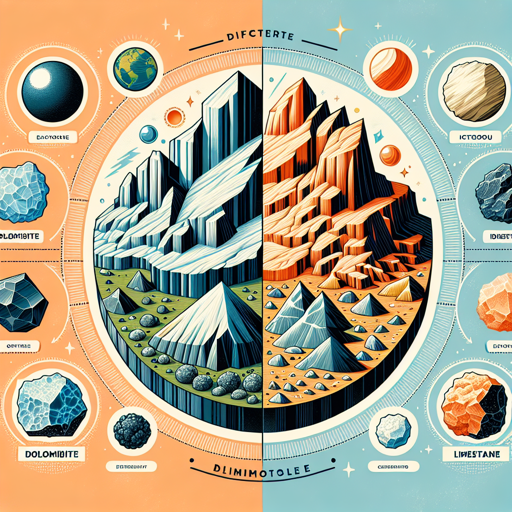Unearthing the Differences: Dolomite vs Limestone
A comprehensive exploration of the similarities and differences between two closely related rock types: dolomite and limestone

Introduction
In the fascinating world of geology, two rock types often find themselves in a face-off: dolomite and limestone. While they share many similarities, they also boast a unique set of characteristics that set them apart. But what exactly are these differences, and why do they matter in the grand scheme of geology? Let’s delve into the depths of these two captivating rock types to find out.
Dolomite vs Limestone: A Matter of Composition
Both dolomite and limestone are sedimentary rocks, primarily composed of minerals formed by the accumulation of sediments over time. They are often found in the same places and can even form together.
Limestone is a rock composed mostly of the mineral calcite (calcium carbonate, CaCO3), while dolomite is named for the mineral dolomite (calcium magnesium carbonate, CaMg(CO3)2) which constitutes a significant portion of the rock’s composition.
The Formation Process
Limestone forms mainly in marine environments from the remains of sea creatures such as coral or shells. Dolomite, on the other hand, is thought to form when limestone undergoes a process called dolomitization — where the calcium in limestone is partially replaced by magnesium.
“In every outcrop of every mountain, the story of our earth is etched.” - Anonymous
Visual Differences
One of the most noticeable differences between dolomite and limestone lies in their appearance. Limestone tends to be light in color, ranging from white to light grey. Dolomite, in contrast, often has a more diverse color palette, including hues of brown, green, and gray.
Practical Implications
The differences between dolomite and limestone extend beyond their visible characteristics and composition. They also have different reactions to acid, with limestone showing a vigorous fizz when in contact with a weak solution of hydrochloric acid, while dolomite shows a less pronounced reaction.
| Dolomite | Limestone | |
|---|---|---|
| Color | Brown, green, gray | White, light gray |
| Mineral Composition | Dolomite (CaMg(CO3)2) | Calcite (CaCO3) |
| Formation | Dolomitization of limestone | Accumulation of marine life remains |
| Acid Reaction | Less pronounced | Vigorous |
For more detailed information about these fascinating rocks, refer to this comprehensive guide provided by the US Geological Survey.
Conclusion
Dolomite and limestone, while similar in many aspects, each tell a unique story of our earth’s history. Their differences in formation, composition, and appearance underscore the intricacy and diversity of the geological world. As we continue to study these rocks, we gain a deeper understanding of the processes that have shaped our planet over billions of years, reminding us of the dynamic and ever-evolving nature of the Earth beneath our feet.